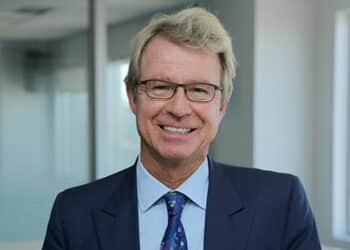2025 has seen an increase in foreign exchange (FX) hedging due to concerns about the dollar’s future, but Insight Investment has argued that certain methods for curbing currency risk may be more effective than others.
Speaking to InvestorDaily, head of currency solutions at the firm, Francesca Fornasari, drew attention to the costly and obscure nature of hedged share classes.
As reported in August by InvestorDaily’s sister brand, Money Management, exchange-traded fund (ETF) providers Betashares and BlackRock have reported increased flows for their currency hedged vehicles this year as investors shore up against further volatility in the US.
Similarly, JP Morgan Asset Management told InvestorDaily earlier this month that while the asset manager continues to back US equities, it is mindful of dollar exposure, with its current strategy involving hedging.
“US asset exposure, yes; US dollar exposure, less so,” global market strategist at the firm, Kerry Craig, told this publication at the time.
While many investors assume that currency-hedged share classes offer a simple, low-cost way to neutralise currency risk, Fornasari cautioned that these fund types can be “both expensive and opaque”, often incurring charges one to two basis points higher than those typically levied by currency managers.
Moreover, as neither management fees nor trading costs are clearly monitored, Fornasari said there is also a “notable risk” of non-competitive trading costs.
Recent analysis from the firm has found that hedged share classes – particularly in equities and illiquid shares – can often experience a performance drag.
Looking at the performance of a US exchange-traded equity fund compared with an Australian dollar hedged share class between January 2018 and August 2025, Fornasari said Insight found a performance drag of 87 basis points per annum above what could have been achieved by passive currency hedging by a currency manager.
She attributed this to several factors: extra management fees from currency hedging, bid-offer execution costs, and a somewhat mechanistic currency-hedging strategy often used by passive managers.
“In the arena of passive investments, it is particularly ironic to note how much focus is given to tracking error, yet how silent nearly all parties are regarding the comparatively large frictional costs of currency-hedged share classes,” she said.
Moreover, Fornasari noted that most hedged share classes are limited in scope, often only hedging against one currency, such as the US dollar.
“This leaves residual currency risk that can be significant, depending on the allocation of assets and the volatility of the unmanaged currency component,” she said.
Fornasari added that managing FX at the fund level can lead to implementation inefficiencies and higher transaction costs, as investors do not gain from any netting across different currency exposure positions.
“This is a particular issue if the assets in the various funds have a low or negative correlation.”
Other pathways
Rather than currency-hedged share classes, Insight Investment has instead championed the employment of specialist currency managers as the “optimal approach” to mitigate the effects of a weakening US dollar.
Specifically, Fornasari highlighted the value of a manager capable of executing a customised currency program across diverse asset allocations.
“This will be more effective in managing all significant currency exposures and not just US dollar exposure.
“The approach can avoid the performance drag of hedged share classes and can offer the investor full transparency on all costs,” she told InvestorDaily.
Since performance drag was found to be most apparent in equity and illiquid share classes, Fornasari said those investing in international assets would most stand to benefit from moving beyond share-class hedging.
“Those investing in international assets to improve portfolio diversification and broaden the pool of opportunities might take note because the introduction of currency risk can often be an unintentional by-product,” she said.
At the same time, despite continued enthusiasm for US such as the mega-cap tech stocks, Fornasari emphasised the discussions around waning US exceptionalism and instead pointed to Europe’s emergence as a “new positive story”.
“We’re long euros and with the US administration regularly talking about the dollar’s overvaluation, we believe this could represent the start of a long-term trend,” she said.






